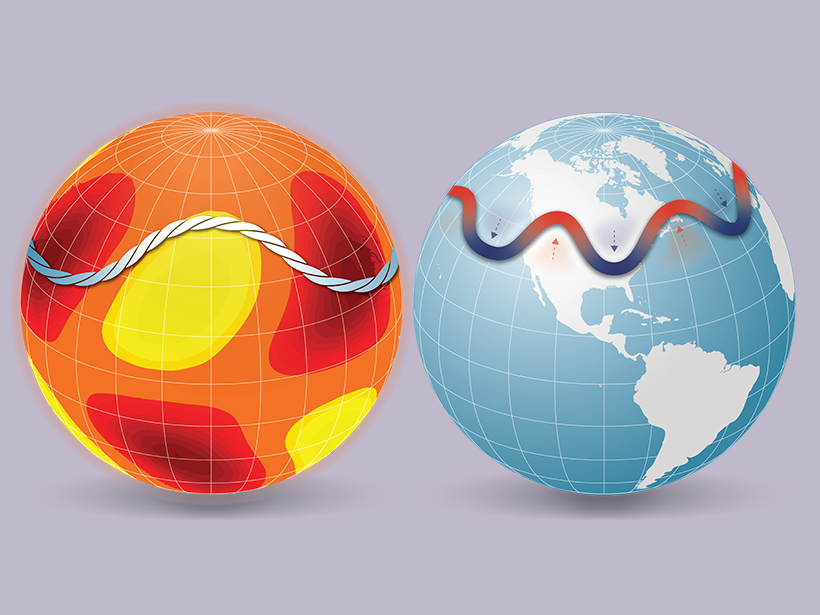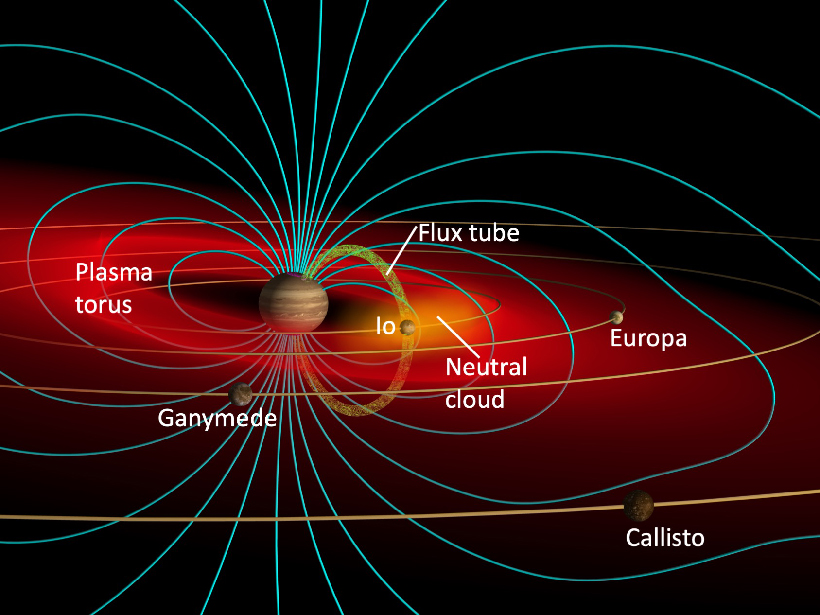A new analytical technique enables direct analysis of dissolved organic carbon molecules that store carbon in the ocean for thousands of years.
Sarah Stanley
Sarah Stanley, a freelance writer for Eos, has a background in environmental microbiology but covers a wide range of science stories for a variety of audiences. She has also written for PLOS, the University of Washington, Kaiser Permanente, Stanford Medicine, Gladstone Institutes, and Cancer Commons, a nonprofit that works with cancer patients.
Space Weather Forecasting Takes Inspiration from Meteorology
Solar features analogous to major atmospheric waves on Earth could offer more advanced warning of harmful solar storms.
Predicting the Future of Greenland’s Melting Ice Sheet
Despite recent leaps in our understanding of how climate change is affecting Greenland’s glaciers, many uncertainties remain.
Two Moons and a Magnetosphere
Decades of research have illuminated how Io and Europa shape—and are shaped by—Jupiter’s giant magnetosphere.
New Recognition for Major Players in the Ocean’s Silicon Cycle
Tiny, shelled protists known as Rhizaria may be responsible for up to one fifth of the total amount of silica produced by the world’s oceanic organisms.
An Element of Randomness in Modeling Arctic Ice Cover
Incorporating random variation of temperature, humidity, and wind offers a computationally cheap alternative to improving resolution in an Earth system model when predicting when Arctic sea ice will disappear.
The Stuff That Psyche Is Made Of
The metallic asteroid Psyche appears to contain more rock than previously thought, shedding new light on possible scenarios for its formation in the early solar system.
Chinese Swamp Core Reveals 47,000 Years of Monsoon History
Magnetic analysis of mineral composition supports the importance of tropical climate processes in shaping long-term monsoon patterns.
Evaluating Cloud Cover Predictions in Climate Models
A new analysis highlights progress in predictions of cloud cover from models that are part of the Coupled Model Intercomparison Project.
Pushing the Computational Limits of Climate Simulation
Researchers apply a superparameterization technique to boost the accuracy and efficiency of climate predictions generated by the Energy Exascale Earth System Model.










